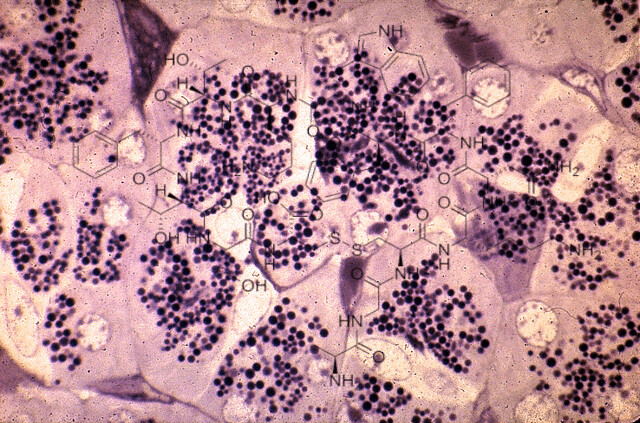Growth Antagonists: Delta Cells
August 13, 2013
The growth of the human body is a highly complex process with many growth agonists and -antagonists taking centre stage at different times. In Growth Antagonists we each time zoom in on one of the key players as we’re trying to understand the puzzle of the endocrine system that regulates growth. Today we focus on Delta cells, which play a pivotal role in the mechanisms to keep growth under control.
Delta cells are important because they produce a growth hormone inhibiting hormone called somatostatin. Somatostatin is a peptide hormone that regulates the endocrine system, reduces sensitivity to growth hormone and inhibits the production and secretion of IGF-1, an important growth agonist. Somatostatin controls local growth and may help to coordinate growth with other processes such as development and metabolism. Delta cells are located in and around the digestive system, in the stomach, the intestines and the Islets of Langerhans in the pancreas. This suggests that there’s a connection between diet and the functioning of the Delta cells. Although somatostatin is also produced in the hypothalamus where it has a more direct influence on curbing growth hormone production because it is located directly next to the anterior pituitary where growth hormone is produced, Delta cells by proximity have a more direct relationship with the food supply chain. They know what’s coming. In this way the mediation between brain (hypothalamus) and bowels (Delta cells) as represented in somatostatin metaphorically describes the tension between our unlimited desire for more and limited resources. Delta cells could perform a much needed reality check. However confronted with today’s overconsumption Delta cells receive false signals of abundance that curbing growth is not necessary, which may slow down the production of somatostatin and eventually lead to unwanted growth. Perhaps next time we walk to the fridge we shouldn’t trust our gut feeling.
[…] especially during puberty when estrogen modulates growth in coordinance with growth hormones and IGF-1. But estrogen plays an equally important role in ending the growth cycle. It stimulates the closure […]